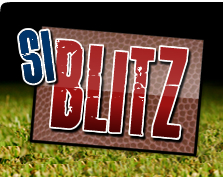|
||||||||
|
Play Like a Pro
Wednesday, January 5, 2011
Joe Montana, Steve Young, Peyton Manning, Brett Favre, Tom Brady, and Drew Brees are often thought of as the ideal quarterbacks for young players. When they are at the top of their game, the offense responds. Young players wanting to be leaders of their team must train hard and practice certain drills in order to improve their performance and reach the next level. For many young players, it all starts with the fundamentals. One of the guiding principles of being a good quarterback is a strong passing game. An important part of being a quarterback is learning to throw on the run. Although the offensive line will do its best to protect the quarterback, sometimes quarterbacks must leave the pocket and continuously move around in order to find the target. The Circle Drill is a good way to work on a rollout pass, release the ball quickly, and focus on keeping the shoulders and hips squared up to the target. In this drill the quarterback stands opposite another player. He begins running around the player, in a circle formation, tossing the ball back and forth. For kids that need a more visual approach, marking the circle with cones may help. Once the drill is finished, the player reverses the action. Basic passing routes work with both quarterbacks and wide receivers. It allows quarterbacks to work on accuracy and timing. Quarterbacks position themselves in the middle of the field, while the receivers stand to the right or left of him. Receivers will run the same pass routes the first three to five passes so that the quarterback practices throwing to the same location. Once the quarterback can consistently hit the target without being off balance or releasing too early, receivers can run alternate routes.
Making a quarterback's footwork more efficient also becomes a key component for success. Drills such as the three-step or five-step drop help players work on pre-snap posture, form, and bringing up the ball to the carrying position. Quarterbacks set up with both hands on the ball. Once the coach blows the whistle, the quarterback pulls the ball up close and drops back three steps, and on the third step he throws the ball. If quarterbacks are working on the five-step drop, they backpedal five steps and then throw on the fifth step. These drills help quarterbacks throw the ball more efficiently against the blitz. In order to avoid turnovers quarterbacks must also work on ball protection and control. Although this is an instinctive skill, some players can also use some extra help. This ball-protection drill can easily be done at home with a friend or during practice. Quarterbacks hold the ball with their passing arm and simulate a circular motion around their head, arms, waist, legs, knees and feet. During the drill the partner, or coach, shouts out different parts of the body where the ball must revolve around. Once they reach the floor the quarterback drops the ball and then quickly recovers it. He does this about three times at the end of each round. In addition, players can begin the drill in one direction and then reverse directions the second time around. However, in combination with practice drills a quarterback must also be on top of his game mentally. He must know the strengths and weaknesses of his team, in addition to adapting to the defensive coverage and finding what works best against a particular team. Quarterbacks should watch films so that they can form strategies and figure out what works best for touchdown plays, first down plays and basic plays, which include the running game, how to save time, and how to run down the clock. Strategy becomes as important as the physical part of the game. Article by Anel Laj |
|||||||
|
||||||||

Copyright © 2025 Sports International, Inc. All rights reserved.
Use of this site implies that you agree to our Privacy Policy & Terms of Use statements.

Use of this site implies that you agree to our Privacy Policy & Terms of Use statements.












